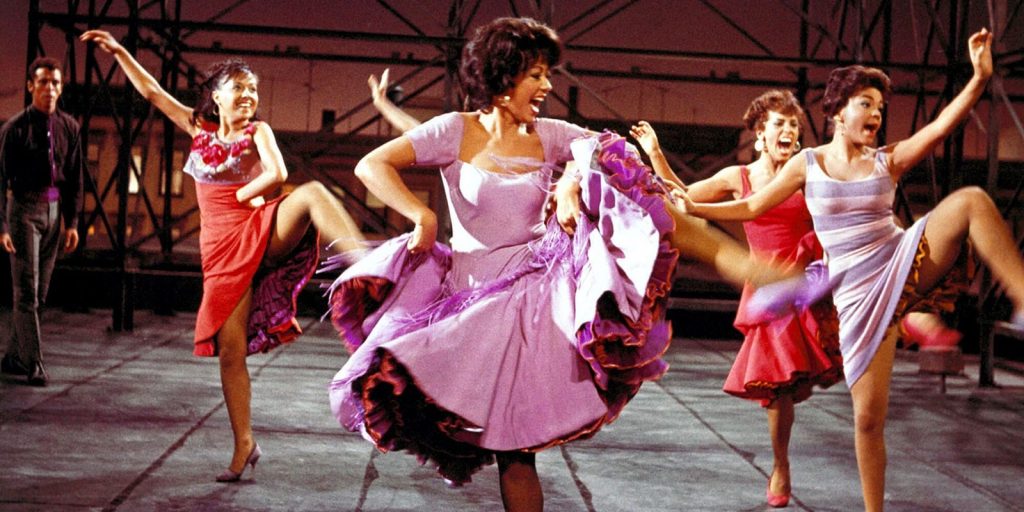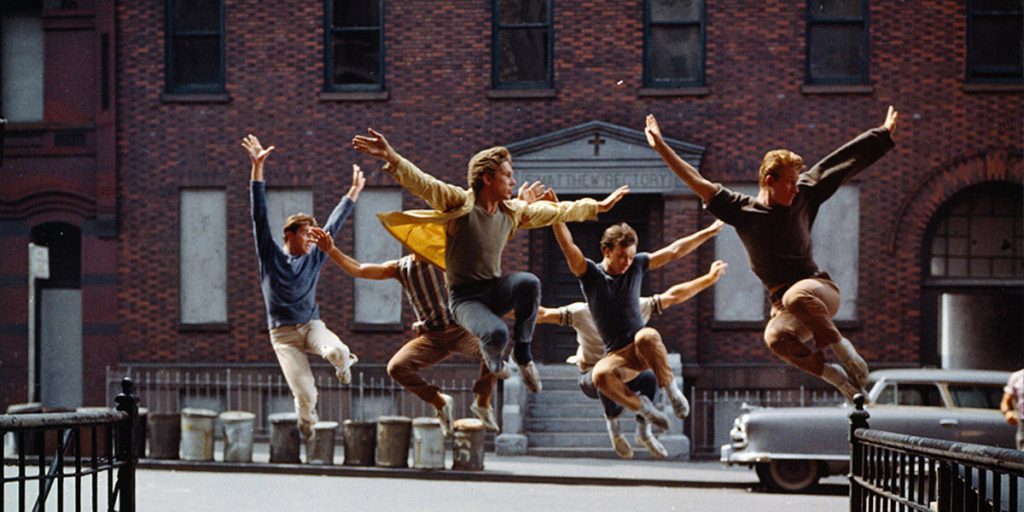West Side Story (1961) still dazzles fifty years later thanks to its raw performances, timeless themes, and catchy melodies.
In 1964, communication theorist Marshall McLuhan penned the well-known phrase “the medium is the message” in his book “Understanding Media: The Extensions of Man”. What he meant by this phrase was that the medium you choose to tell your story is just as, if not more important than the story itself. What works as an epic oral poem won’t necessarily translate to a television miniseries or narrative videogame. So, when screenwriter Ernest Lehman and directors Robert Wise and Jerome Robbins were tasked with bringing Auther Laurents’ now iconic Broadway musical West Side Story to the silver screen, it went without saying that they had their work cut out for them. As we’ll see later, a story made for the stage functions very differently for the screen, and there are a multitude of missteps a creative team can make while translating the story. Fortunately, Lehman, Wise, and Robbins succeeded brilliantly, and even fifty years and one upcoming remake later, the 1961 film still stands as a towering cinematic achievement and one of the best movie musicals of all time.
Like other iconic pieces of art, such as 10 Things I Hate About You and The Lion King, West Side Story’s plot has its roots in the works of William Shakespeare. It doesn’t take a genius to deduce that the story of the Jets and Sharks, two juvenile gangs (white and Puerto Rican respectively) whose rivalry escalates into outright antagonism when Tony (Richard Beymer), the former leader of the Jets, falls for Maria (Natalie Wood), the sister of Bernardo (George Chakiris), the leader of the Sharks: is an indirect adaptation of Romeo and Juliet. Tony and Maria meet at a dance and it’s love at first sight. Impeding their journey to a happily ever after is a looming war between the Jets and the Sharks, disapproval from their families, and the racial prejudice of the time period, all of which Lehman, Robbins, and Wise navigate with surprising grace in a genre built around rejecting subtlety.
Though the politics of West Side Story may be delivered subtly, the aesthetics of the film are anything but. This can be traced to the story’s origin on the stage. When a Broadway musical is being developed, the sets, costumes, and lighting have to be designed in such a way that a patron in standing room at the very back can have a comparable experience to the celebrity who snagged front row seats. This results in musicals that lean into large, often abstract set pieces and colorful costumes that you probably won’t see anybody actually wearing on the street. When this is adapted for the screen, and the additional element of the camera is introduced, the approach changes slightly, but, on the whole, it stays the same. West Side Story takes every opportunity available to bathe its scenes in hues of greens, purples, and, most prevalent, reds. It’s impossible to go more than three scenes without the characters either talking in front of a brick wall or being bathed in the crimson light of some off-screen source.

Besides being aesthetically pleasing, this color choice serves to heighten the already intense emotions of the characters and to further serve the film’s themes. At its core, West Side Story is a narrative about the corrosive effects of hate and the tragedy of lost innocence. While these themes are also major players in Romeo and Juliet, Auther Laurents makes a few key changes to separate the musical from its source material. For one, the tension between the two gangs is explicitly racial, from the scene shortly after the prologue when Lieutenant Schrank (Simon Oakland) and Officer Krupke (William Bramley) accost the two gangs for fighting, to the confrontation in Doc’s candy shop shortly before intermission; both gangs are explicit in their hatred due to the other’s nationality. It’s made clear that the Sharks (who, it is worth noting, are all played by white actors in brownface with the exception of Rita Moreno) had few options when immigrating from Puerto Rico and that the Jets are similarly stuck in their West Side neighborhood. Both gangs are stuck in place and are forced to coexist.
Lehman’s screenplay allows the characters to vent their frustrations while keeping the real motivations for their rage just below the surface. For as much as the conflict in West Side Story stems from race, the effects of toxic masculinity are also prevalent throughout. The Jets and the Sharks are shown as a closely connected unit, basically family, all throughout the third act. They hang together, often crash at each other’s houses, and always have each other’s backs. However, their extended time spent together creates an echo chamber of ideas and prejudices, and by the time intermission rolls around we can see how the pressure to “act like a man” has done just as much to escalate the conflict than their hatred for “the other”.
Few musicals can balance their themes through their characters and musical numbers as deftly as West Side Story, few probably will in the future. Recently, we’ve seen Dear Evan Hansen take one of the most popular Broadway musicals of the last decade and turn it into a borderline unwatchable mess, while the filmed stage version of Hamilton has sparked a new conversation on how we should depict the less-pleasant aspects of our history. With a new iteration of West Side Story less than a month away, one can’t help but wonder if Spielberg will be able to replicate the success of the original film. All of the ingredients are there, a screenplay by Oscar nominee Tony Kushner, a possible star-making performance by newcomer Rachel Zegler, and gorgeous production design by Rena DeAngelo should, at the very least, provide for a visually pleasing viewing experience, whether or not it will be able to reach the soaring heights of the original. Regardless of the remake’s success, West Side Story remains one of the best movie musicals of all time, and essential viewing for anyone interested in the Golden Age of Hollywood.
Steven Spielberg’s West Side Story was released in U.S. theaters on December 10, 2021. Read our review of West Side Story (2023).

 loudandclearreviews.com
loudandclearreviews.com
